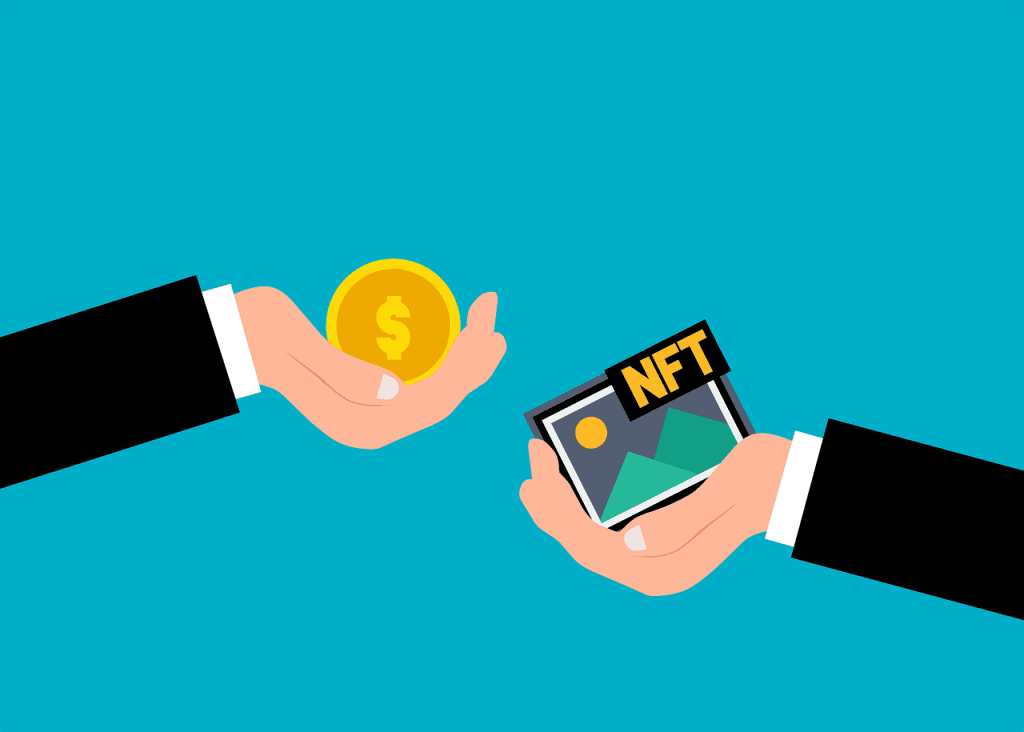
YEREVAN (CoinChapter.com) – Artist Daniel Maltzman, who has established a name for himself in the physical and digital art space, advises people to exercise caution while investing in nonfungible tokens (NFT).
The warning appears in the wake of an unprecedented NFT boom witnessed in the previous year and continued rising in 2022. Investments into startups connected with the digital art space touched $7.4 billion in Q1/2022, according to data from PitchFork.
But with cryptocurrencies crashing, demand for NFTs has dipped in tandem.
For example, OpenSea, the largest NFT marketplace, saw its monthly volume dropping by almost 50% between January and May, to $2.6 billion. As a result, Maltzman believes it is time to practice caution and avoid boarding overhyped, expensive NFTs.
“I won’t say play money, but you should buy NFTs with money, that, if you lost, it wouldn’t change your life”.
he told Cointelegraph.
Born in Beverly Hills, California, Maltzman made a name for himself in the art world, promoting some of the hottest clubs in Hollywood. He also runs a successful fashion business.
Many reputed art galleries, including Dawson Cole, Lurie Gallery, Magidson Fine Art, etc., have exhibited Maltzman’s works. His art can also be found in the collections of Justin Bieber, Eugenio Lopez, Paris Hilton, J.J. Reddick, Scott Painter, and Steve Tisch, among others.
Joining the NFT fray through The Meta Art Club (TMAC)
As an artist with a career stretching over 30 years, Maltzman is fascinated with NFTs. He perceives the booming industry as a great platform for artists to showcase their works.
“The NFT space is absolutely incredible. It’s a lot of fun and it gives artists a lot of credibilities.”
Venturing into the world of NFTs was not difficult for Maltzman. Most of his work began first as digital art on the computer before he converted them into physical paintings.
So when the opportunity struck for Maltzman to join The Meta Art Club (TMAC), he was glad to join the project.
The Meta Art Club brings a curated drop of 9,888 NFTs from 35 global digital artists. Co-Founded by famous art curator Frank Smits, TMAC aims to bridge the gap between traditional art and NFTs.
Vancouver-based WestCoastNFT, which helped launch many blue-chip collections, including the Doodles, is also behind the project.
Being a traditional artist, Maltzman hopes more people will be interested in buying conventional art NFTs. This, according to him, will encourage more artists to bring their work into the space.
“One of the things that bother me the most is that blue-chip NFT projects are succeeding, while those on the lower spectrum, like traditional art, are left out,”
Maltzman laments.
He believes it is hard for traditional artists to carve out a place in the NFT industry. Many investors have incurred heavy losses from some projects that have seen a drop in demand and value. As a result, people are looking to invest in reputed projects, making it harder for artists to find takers for their works.
A crypto market full of scams!
Besides being an artist, Daniel Maltzman is also an avid NFT collector. His items include art from the celebrated Damien Hirst’s “The Currency” collection. He is also very optimistic about the Angry Ape Army, a project in the creation of which he was involved.
As a result, he is well aware of the various scams and risks involved for investors.
“NFTs are like the crypto market. Not everyone is a good person, so when they do a rug pull, it taints the image of the industry. As a result, many people are afraid to take a chance at investing in NFTs,”
he complains.
The artist’s worries are not unfounded. A recent survey by PrivacyHQ revealed that 90% or nine out of 10 respondents experienced an NFT scam. In addition, the survey found that 43.8% of scam victims invested in an NFT project that disappeared. Moreover, 43.4% purchased an NFT from a fake marketplace.
Maltzman advises people to be careful when buying an NFT. Just like stocks, investing in nonfungible tokens contains risks. As a result, one should make sure they do a proper risk assessment before parting with their money.
Moreover, he advises artists to partner with organizations like WestCoastNFT. According to him, this will ensure that the project remains secure and reduces the chances of hacks and attacks.
Maltzman attests that there is a lot of art theft and copycats out there. An artist’s work is likely to be duplicated and sold as an original, sometimes under a different name.
Just like physical art, there is little one can do to
Can traditional artists succeed in the NFT space?
Despite the challenges, Maltzman believes one should not think artists cannot succeed in the NFT space. Most of the industry hype will subside, leaving only quality projects in the market. With this in mind, artists looking to enter the space should build their projects based on what people are more likely to invest in.
According to Maltzman, projects should come with a separate utility to rise in value over time and be more attractive to collectors.
Guy Champion, NFT trader and Co-Founder of Freescape, agrees with Maltzman.
“I believe artists can survive and compete in the NFT space… Major artists have done well in NFTs because of their previous fame in the general art space. Building utility behind that is where artists and creators can be very successful,” Champion told CoinChapter.
Art Galleries compete with digital collectibles
Since NFTs became popular, many art galleries have been pivoting to accommodate them. Faced with tough competition from the fast-emerging sector, established galleries like Pace, KÖNIG GALERIE, and Ora-Ora were among the first to incorporate NFTs in their exhibitions and programs. In time, many others joined it.
For Maltzman, it is obvious that traditional galleries now have to compete with the NFT sector. However, he sees the competition as a healthy one.
According to the artist, both industries can benefit from each other. For example, traditional galleries give artists credibility and exposure in the industry, which they can leverage in the NFTs space. On the other hand, they also help to set a market price for the artist’s work, even if sold directly to clients.
Meanwhile, NFTs have also had an impact on the physical art space. Since the spike in their popularity, galleries have attracted much attention.
An Artsy Gallery Insights report suggests NFT adoption in the sector was slow in 2021. However, 87% of those galleries that sold NFTs said they were ready to do it again, citing customer demand.
As an artist, Maltzman does not feel threatened by the industry. On the contrary, he believes the art world is big enough to accommodate everyone.
“NFTs are like apples and organges. They both can survive equally. Art is like a big circle with both industries in it,”
Maltzman says.
However, he is also worried that small galleries can crash in the long run, owing to the competition. But big, blue-chip galleries will not go out of business.
Maltzman highly respects galleries and believes they work hard for the artists they represent. However, he does not agree with those who believe they collect undue commissions.
With the current bear market continuing to impact the industry, Daniel Maltzman’s advice is right on time. Those looking to buy an NFT or create a collection should do enough research.
Watch the full interview here:


